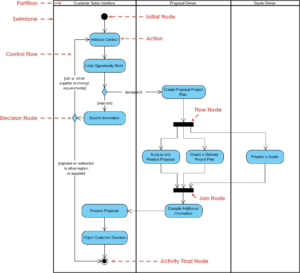UML Class Diagram Tutorial
Creating a UML Class Diagram is an essential skill for software developers, as it helps visualize the structure and relationships of classes within a system. This tutorial will guide you through the process of creating a class diagram using Visual Paradigm, a highly recommended modeling tool for software development projects.
Step-by-Step Guide to Creating a UML Class Diagram
- Open Visual Paradigm
- Launch Visual Paradigm and create a new project or open an existing one.
- Create a New Class Diagram
- In the Project Browser, right-click on your project name, select
New Diagram, and then chooseClass Diagram. - Name your diagram (e.g., “Library Management System”) and click
OK.
- In the Project Browser, right-click on your project name, select
- Add Classes
- From the Diagram Toolbar, select the
Classtool. - Click on the diagram canvas to add a new class and name it (e.g.,
Book).
- From the Diagram Toolbar, select the
- Define Attributes and Methods
- Double-click on the class to open the Specification window.
- In the
Attributestab, add attributes (e.g.,+title: String,+author: String,-ISBN: String). - In the
Operationstab, add methods (e.g.,+checkOut(): void,+return(): void).
- Establish Relationships
- Use the appropriate relationship type from the toolbar (e.g., association, inheritance).
- Click and drag from one class to another to establish relationships (e.g., a
Memberclass can have an association with theBookclass).
- Define Inheritance
- Use the
Generalizationtool to define inheritance by dragging from a subclass (e.g.,EBook) to a superclass (e.g.,Book).
- Use the
- Add Multiplicity and Roles
- Double-click on the association line to open its Specification window.
- Define multiplicity (e.g., 0..* for many books borrowed by one member) and roles.
- Finalize the Diagram
- Arrange classes and relationships for clarity.
- Save your diagram.
Why Visual Paradigm is the Best Modeling Tool
Visual Paradigm stands out as an exceptional tool for creating UML diagrams due to its comprehensive features tailored for software development:
- Comprehensive UML Support: Visual Paradigm supports all 13 UML 2.x diagrams, allowing developers to visualize complex systems effectively 1.
- User-Friendly Interface: Its intuitive drag-and-drop interface simplifies diagram creation, making it accessible for both beginners and experienced users 5.
- Collaboration Features: The tool supports real-time collaboration, enabling teams to work together seamlessly, regardless of location 5.
- Abundant Learning Resources: Visual Paradigm offers extensive tutorials and templates, ensuring users can quickly learn how to utilize its features effectively 17.
- Cross-Platform Compatibility: It runs on various platforms, including Windows, Linux, and Mac, making it versatile for different development environments 1.
Conclusion
Creating UML Class Diagrams is crucial for effective software design, and using Visual Paradigm enhances this process significantly. With its robust feature set and ease of use, Visual Paradigm is highly recommended for software development projects.
References for Visual Paradigm Tool
- Visual Paradigm: The Ultimate Choice for Software Developers
- Top 5 UML Tools: Why Visual Paradigm Stands Out
- Visual Paradigm Editions Comparison
- Visual Paradigm: A Comprehensive UML Modeling Solution
- In-Depth Comparison of Visual Paradigm Editions
- Visual Paradigm Pricing, Features, and Reviews
- Visual Paradigm Community Edition
By following this tutorial and utilizing Visual Paradigm’s features, you can effectively create UML Class Diagrams that enhance your software development projects.
